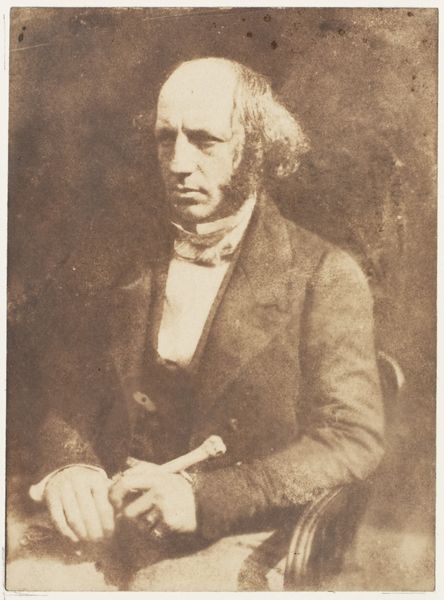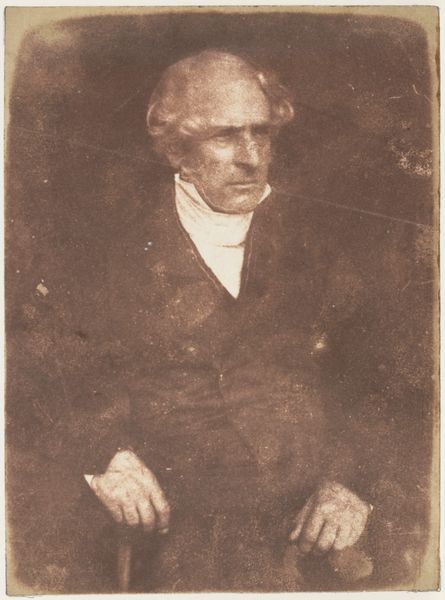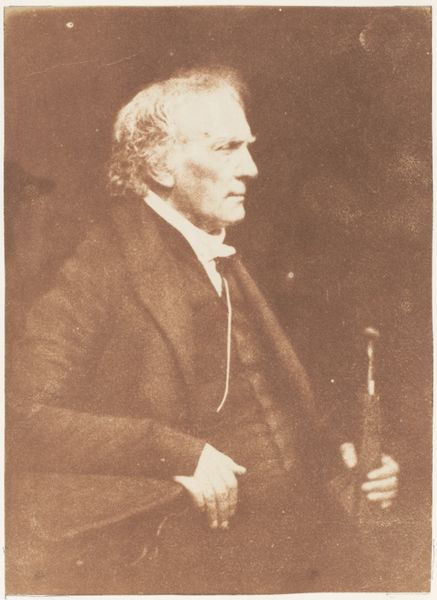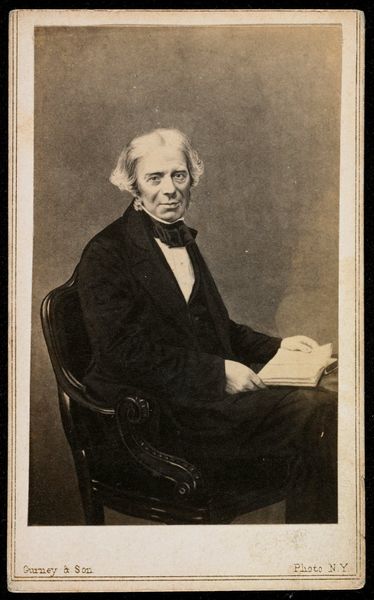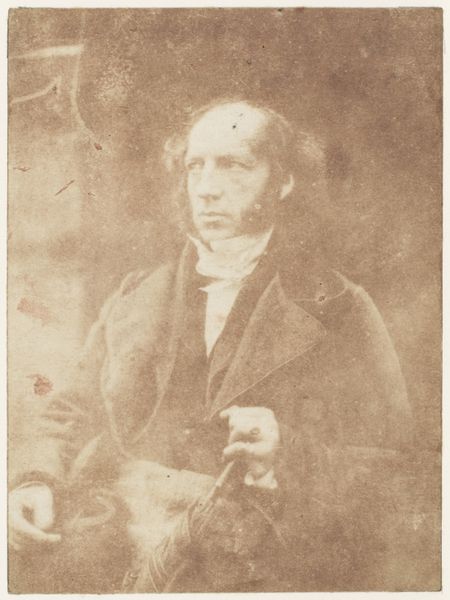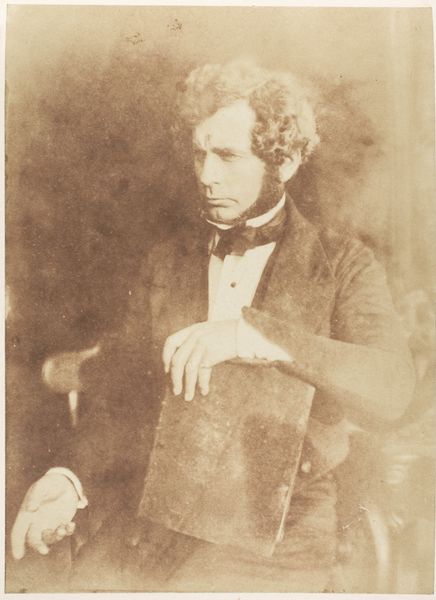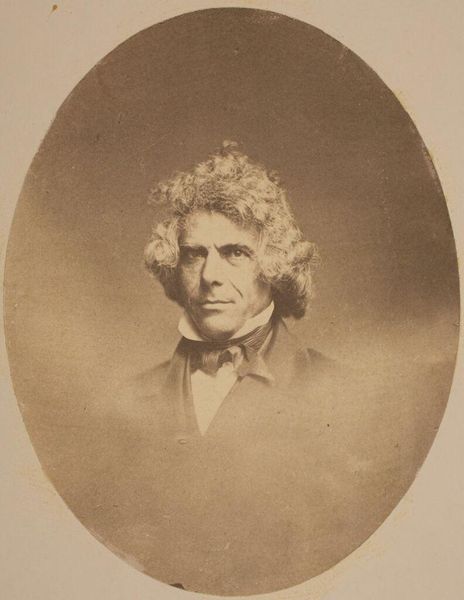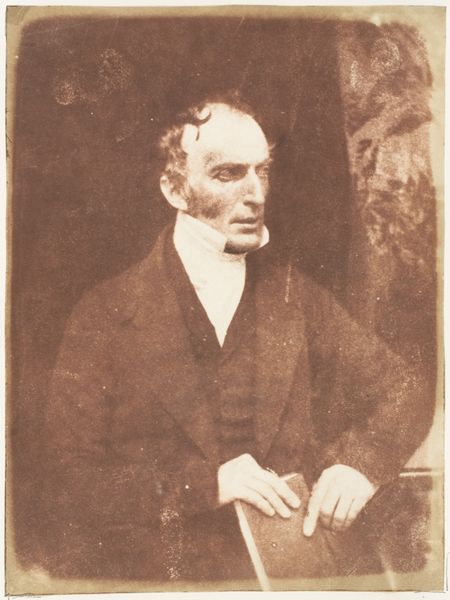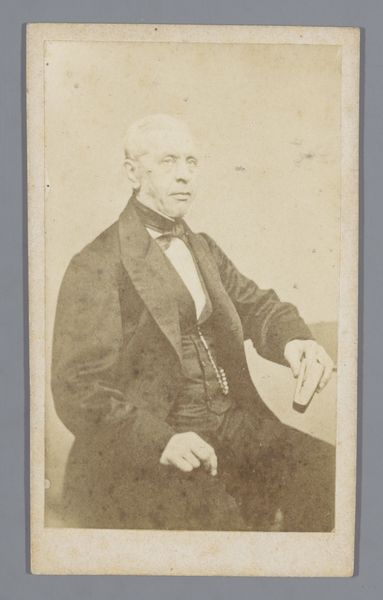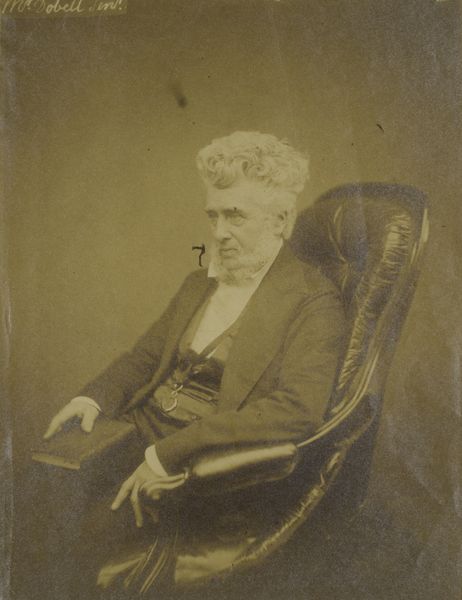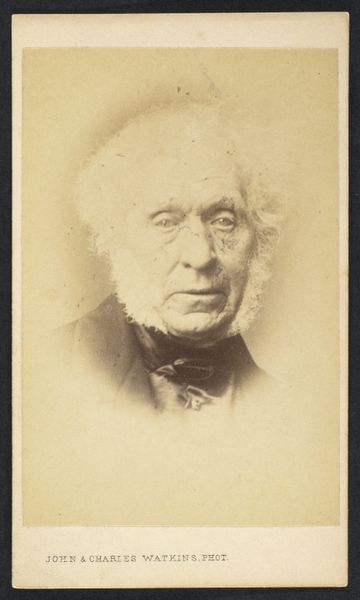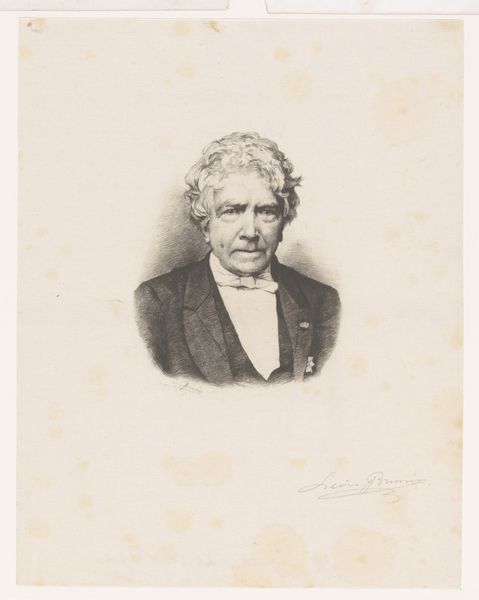
daguerreotype, photography
#
portrait
#
daguerreotype
#
photography
#
romanticism
#
men
Copyright: Public Domain
Editor: So, this is "Rev. Thomas Jolly of Bowden," a daguerreotype made between 1843 and 1847 by Hill and Adamson. The sepia tones give it such a quiet, contemplative feel. How do you interpret this portrait within its historical context? Curator: It's interesting you pick up on the contemplative aspect. Daguerreotypes like this one weren't just simple records. Think about the sitter: a reverend, likely a figure of considerable social power within his community. Photography at this time offered a new way to represent authority and status, moving beyond painting, which had long been the domain of the elite. How might the availability of photography have impacted perceptions of power at the time? Editor: It democratized it to some extent? Painting was really only for the wealthy, whereas this...feels somehow more accessible, even with the constraints of early photography. Curator: Precisely. The act of representation itself became somewhat democratized, yet still operated within the societal structures of the time. Jolly, here, controls his image, but think of who didn’t have that privilege – the working class, the poor, and of course, marginalized groups. Whose stories were *not* being told through these new technologies, and what does that tell us about the power dynamics at play? Editor: That makes me think about who was operating the cameras too. Hill and Adamson…were they interested in this power dynamic? Were they making conscious choices about who and how they photographed? Curator: Absolutely, and those are key questions to explore. Photography, like any medium, isn’t neutral. Even seemingly straightforward portraits like this one can reveal complex negotiations of identity, class, and representation when viewed critically. Think of the portrait studio as a charged space. Editor: It definitely gives me a lot to think about – not just the technology but who gets to use it, and for what purposes. It is also worth noting how this is related to documentary photography and the issues of subject and power. Curator: Precisely! Understanding art as a product of its time means constantly questioning whose perspectives are amplified and whose are silenced.
Comments
No comments
Be the first to comment and join the conversation on the ultimate creative platform.
